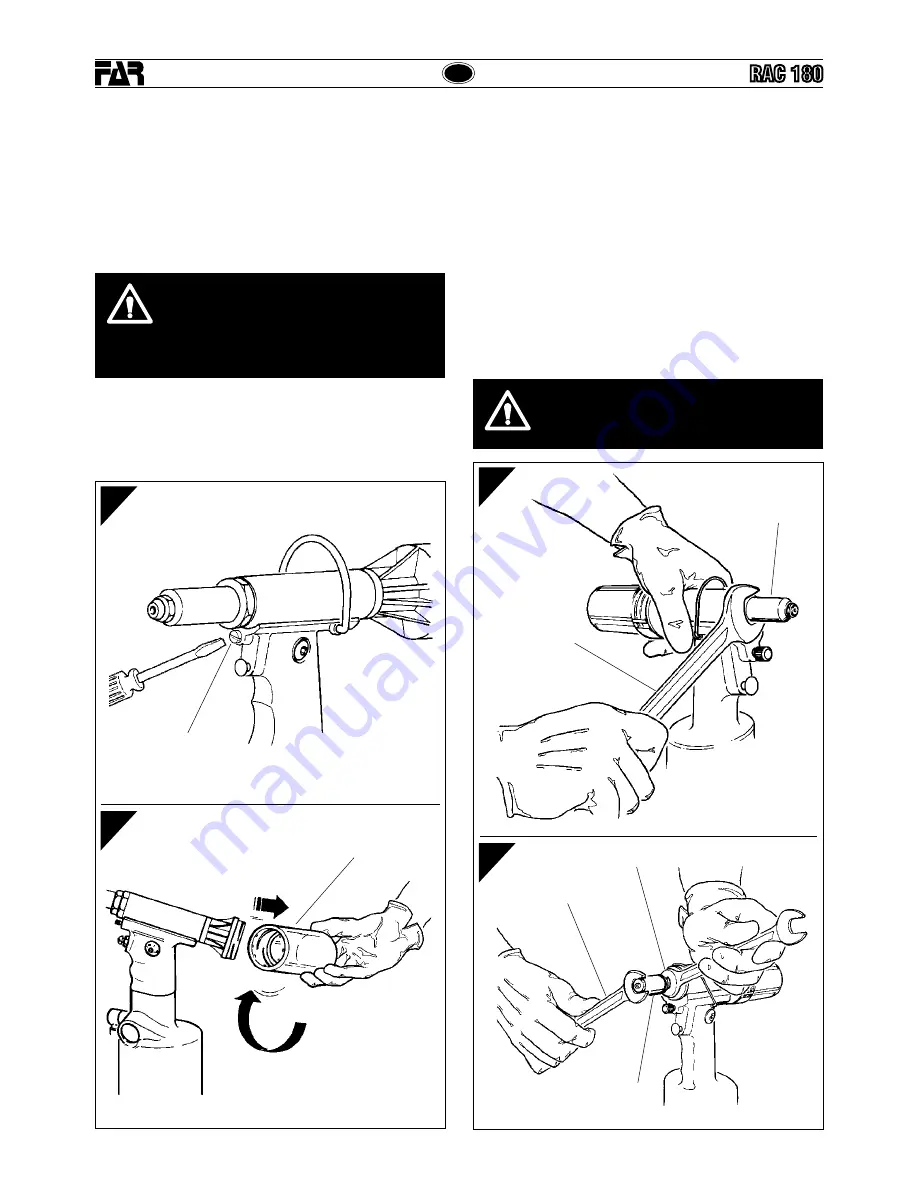
GB
14
Date 01-2016
Revisione - 13
RAC 180
WARNING!
Desconnect air feed when performing those
operations.
HOW TO USE YOUR RIVETING TOOL
(fig.
f1-f2
)
After the clamping, the sheared nail is piped by the riveting
tool and ejected from the back into the special container
(C)
.
By swinging the valve
(D)
you can adjust the suction power.
By the suction nail system, the rivet remains in the nozzle also
turning over the head of the riveting tool downwards: this detail
increases a lot the usefulness of the riveting tool.
Do not keep the rivet with your
fi
ngers!
When the container
(C)
is full of nails do not use the riveting
tool. Disconnect the tool, unscrew the container
(C)
and empty it.
DO NOT DISPERSE ANY NAIL!
Screw the container and start again to work.
C
D
WARNING!
Do not remove the container
(C)
during the
riveting operation, as the nail ejection can cause
damages to the worker or to persons who are
nearby the work surface.
f1
f2
MAINTENACE AND CHANGE OF SIZE
(fig.
f3-f4-f5-f6
)
5IFFYUFOEFEVUJMJ[BUJPOPGUIFSJWFUJOHUPPMDBODBVTFUIFTMJQQJOH
of the clamps on the nail due to the deposited impurities.
For this reason, it is necessary to lubricate the clamps after
having cleaned them. However, if clamps are worn out and
as a consequence their working is jeopardized, replace them.
First remove the head which carries the nozzle
(H)
, by means
of a standard spanner of 27 mm. Then, by using two standard
spanners of 11 mm and 16 mm, remove the chuck
(I)
and
FYUSBDUUIFDMBNQT
(L)
.
When replacing the nozzle
(A)
, we recommend to use a
12-mm standard spanner and fit the removed nozzle in the
proper housing located on the bottom of your riveting tool, in
order to avoid losing the nozzle.
f3
f4
H
27 mm
16 mm
11 mm
I
Summary of Contents for RAC 180
Page 1: ......






























